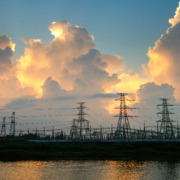Finding Flow
I’ve been thinking a lot about peak performance lately, and not just because my Philadelphia Eagles lost the Super Bowl after the entire pregame broadcast team picked them to win. I promise, I’m going to stop talking about this… eventually.
We understand that peak performance doesn’t just happen. You don’t land on the biggest stage for (American) football without years of practice, endless drills, hundreds of hours watching film, and even more time in the weight room (and if you happen to be Jalen Hurts, squatting 600lbs, NBD). Peak performance demands relentless dedication, and effective habits build the scaffolding for that dedication. To learn more about building those habits, I (finally) read James Clear’s book Atomic Habits.
Among my biggest takeaways was his advice to “find a game where the odds are in your favor” in order to maintain motivation and feel successful while building habits. To support this, Clear naturally points to some actual sporting examples: height is an asset in basketball, but not in gymnastics; Michael Phelps’s physique lends itself to swimming rather than long-distance races. This recommendation aligns with research that shows that it is more productive and rewarding to focus on improving your strengths rather than worrying about your weaknesses. But what can that mean for most of us – non-professional athletes who aren’t relying on our physical characteristics during our careers? How can we ensure the “odds are in our favor” professionally?
Clear suggests that you ask yourself the seemingly simple question, “what makes me lose track of time?” When do you find yourself so focused on something that everything else fades into the background? Essentially, when are you in “flow?” This concept of flow keeps appearing for me: in Clear’s book in the context of optimizing the habits you form (and in this shorter article on motivation), in this recommended Pocket article “The Great Paradox of Peak Performance” that appeared in my Firefox browser, and even in Ingrid Fetell Lee’s book Joyful: The Surprising Power of Ordinary Things to Create Extraordinary Happiness.
All of the essential elements of preparation have to come together in an effortless way during breakthrough performances, as Patrick Mahomes perfectly demonstrated a few weeks ago (again, and again, and again…). If you’d like to see the embodiment of flow, I don’t think you have to look any further! And while finding flow clearly contributes to peak performance, according to Fetell Lee, it’s also an integral component of finding joy (especially if you’re a Chief’s fan.) We can find flow in play, in catching up with friends, in preparing a delicious meal, in listening to a beautiful orchestral performance. It can be harder to find flow at work, though, especially if we aren’t leading an offense down the field against a heavily favored opponent. But if we can incorporate flow into our professional lives, that can lead to joy at work.
I’ve been challenging myself to identify professional moments of flow. When I present on a subject I’m passionate about, the time flies. Meetings go so quickly when I’m speaking with stakeholders about how to improve a process. I’m not checking the clock at all when I’m doing a proofing pass of a colleague’s work. Of course, work will not always be joyful, but we spend a lot of our days working. The more we can incorporate flow and joy, the more rewarding our work can be. And while I’m still obviously pretty sad about Super Bowl LVII, I’m looking forward to watching the Eagles flow this fall. Go Birds.
Have you found “flow” recently, personally, or professionally? I’d love to learn more about it! Please share what things feel like flow to you, either on LinkedIn or by emailing me at Mylenek@idebamarketing.com!
Mylene Kerschner – Senior Research and Consulting Manager









